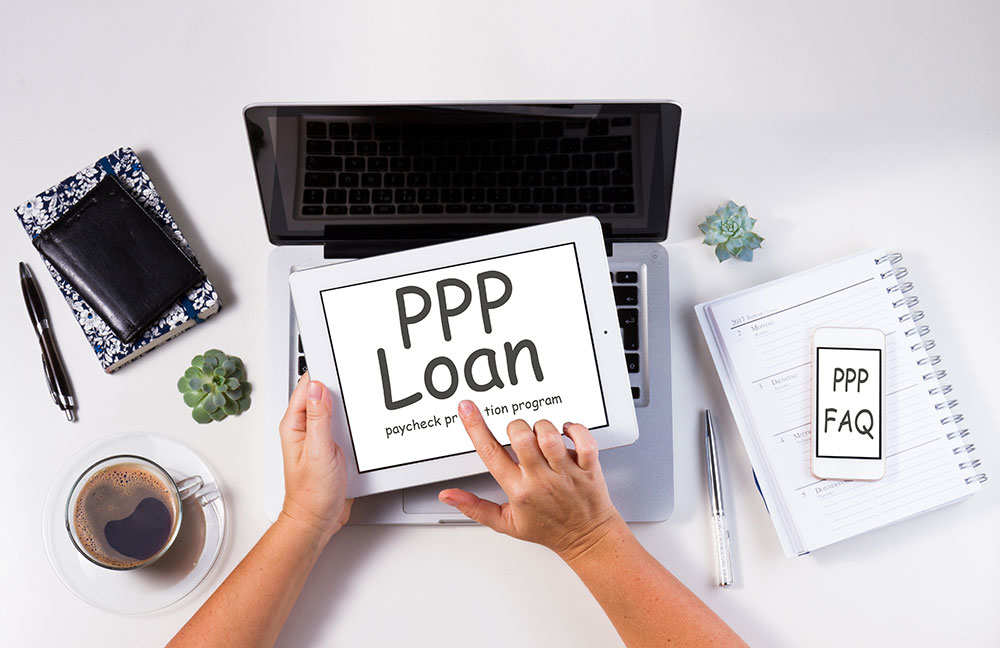How To Increase Your Chances Of PPP Loan Forgiveness
May 11, 2021
As the COVID-19 pandemic has raged across the U.S. throughout much of 2020 and into 2021, small businesses have struggled to survive. While many have not, others have used the federal government's Paycheck Protection Program (PPP) to obtain loans that are completely forgivable. However, since there are deadlines to meet and other terms to ensure a loan will be forgiven, it is crucial for you as a business owner to know more about the process involved in applying for loan forgiveness. To ensure that your PPP loan has the best odd of being forgiven, remember these key points along the way.
A Simplified Process
As a bit of good news, you will be glad to know the loan forgiveness application you will use has been greatly simplified since the program first began. If you are a first-draw borrower who borrowed $150,000 or less, you won't need to submit any additional documentation. Since nearly 90% of PPP loans issued during the first round that ended on August 8, 2020 were for $150,000 or less, chances are this will apply to your situation.
What are the Requirements for PPP Loan Forgiveness?
Whether you obtained a first-draw or second-draw PPP loan, the requirements for loan forgiveness are the same. If you want your entire loan to be forgiven, it is required that you maintain both your staffing and compensation levels during your covered period.
Also, the money you obtained from your PPP loan must have been spent only on eligible expenses during the covered period, with at least 60% of your money being spent on payroll costs alone. If you received your loan in 2020, the covered period is 24 weeks after you obtained your loan. However, if your loan was obtained in 2021, you can opt for either an eight-week period or the standard 24 week period.
What are Considered Eligible Expenses?
In the original PPP legislation, only payroll and the operating costs associated with your business were considered to be eligible expenses. However, when the second round of relief was passed by Congress in 2020, the list of eligible expenses was expanded. As a result, eligible expenses now include not only payroll and operating costs, but also supplier costs, property damage, and money spent on worker protection. Thus, if you had contracts in place with vendors before your covered period, suffered losses at your business due to looting, or had to purchase PPE for workers, install barriers, or expand your business to accommodate social distancing requirements, these expenses will be eligible for PPP loan forgiveness. But remember, any costs associated with property damage that were covered by insurance will not be eligible for forgiveness.
When Should I Apply for PPP Loan Forgiveness?
While you can apply for PPP loan forgiveness as soon as you have spent the funds from your loan or when your loan comes to maturity, it is extremely important to apply for forgiveness before your first loan payment would become due.
No matter whether your covered period is for eight weeks or 24 weeks, payments on PPP loans are deferred for 10 months after your covered period ends. Should you wait until after that deadline to apply for forgiveness, you'll be required to start making payments.
Should you make the mistake of applying for forgiveness after your loan has already matured, you could be facing a financial disaster, since you won't be eligible for forgiveness. Therefore, if your loan originated prior to June 5, 2020, your loan will mature two years following that date. For loans received after June 5, 2020, these will mature five years after the date in which the loan was issued. If you have questions about this aspect of PPP loan forgiveness, speak to your CPA.
How Do I Apply for PPP Loan Forgiveness?
When you are ready to apply for PPP loan forgiveness, you should contact your PPP lender, who will then inform you of which loan forgiveness form you will need to use. Since you may need to submit additional paperwork along with your form, especially if you are a second-draw loan recipient, keeping track of your paperwork along the way will make this process much easier.
As stated earlier, if you borrowed less than $150,000 on a first-draw loan, you will not be required to submit additional paperwork, and thus can use the simplified loan forgiveness form. However, if you received a second-draw loan, you will be required to prove your revenue loss before the government will approve your loan forgiveness.
What Documentation Will I Need to Submit?
Along with completing the PPP loan forgiveness application, you may also need to submit various types of documentation to prove you spent the money from your loan in the required manner. Remember that to be granted full forgiveness for your loan, you will need to show that at least 60% of your money was spent on payroll expenses, with the rest being spent on other eligible expenses discussed earlier.
To prove your payroll costs, you may need to submit such paperwork as bank statements, third-party payroll reports, state and local quarterly financial reports, tax documents such as Form 1040 Schedule C or F, W-2 or W-3 forms, and perhaps other documents as well.
As for your other costs, you will likely need to submit utility bills, purchase orders, canceled checks for such items as PPE, safety modifications, and repairs to your business, and anything else you feel may be relevant. Since this process can be very time-consuming, complex, and frustrating, it is wise to work with your CPA along the way to make sure even the smallest of details are covered.
Since you put in the time needed to make sure you obtained a PPP loan to keep your business going during the pandemic, you should also put in just as much if not more time to make sure your loan is completely forgiven. If you have questions about the process or require expert guidance on what types of documentation you need to submit, schedule a consultation with your CPA to make sure you don't miss critical deadlines.





